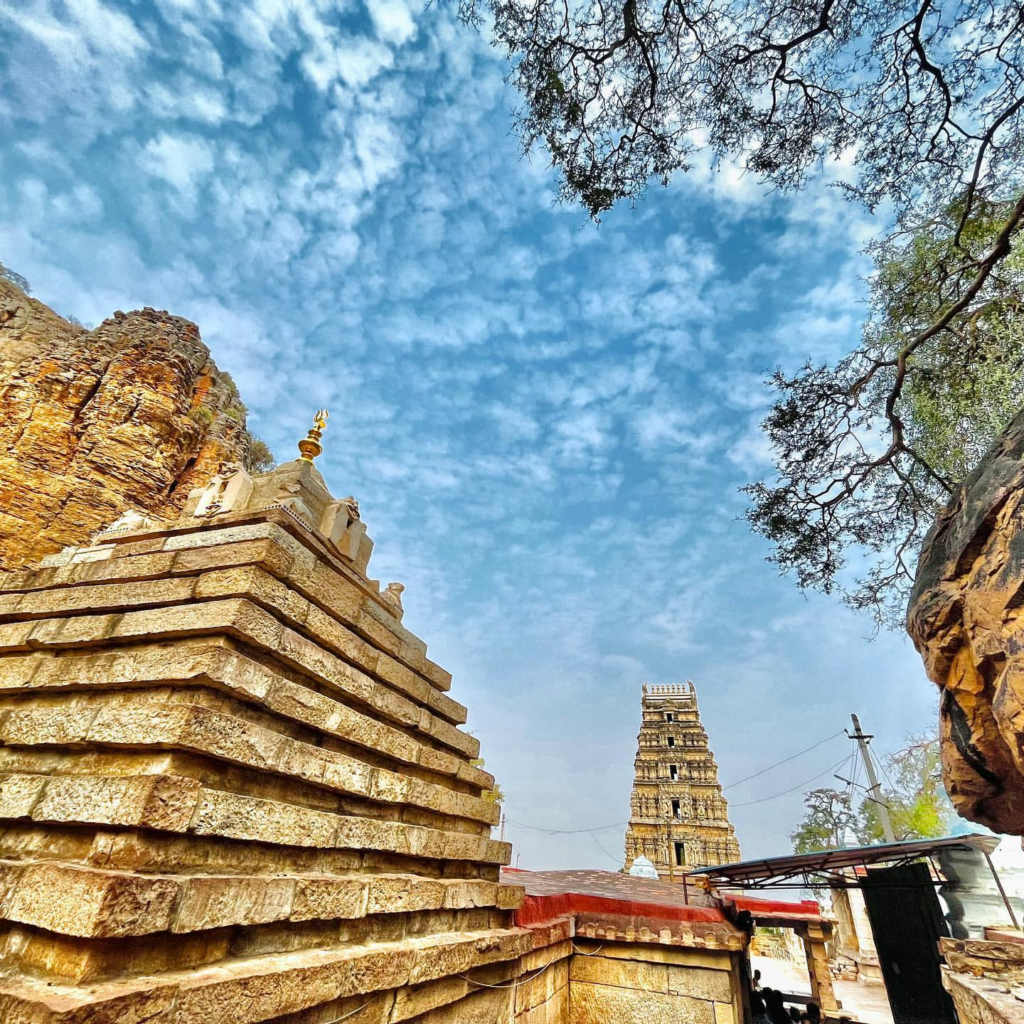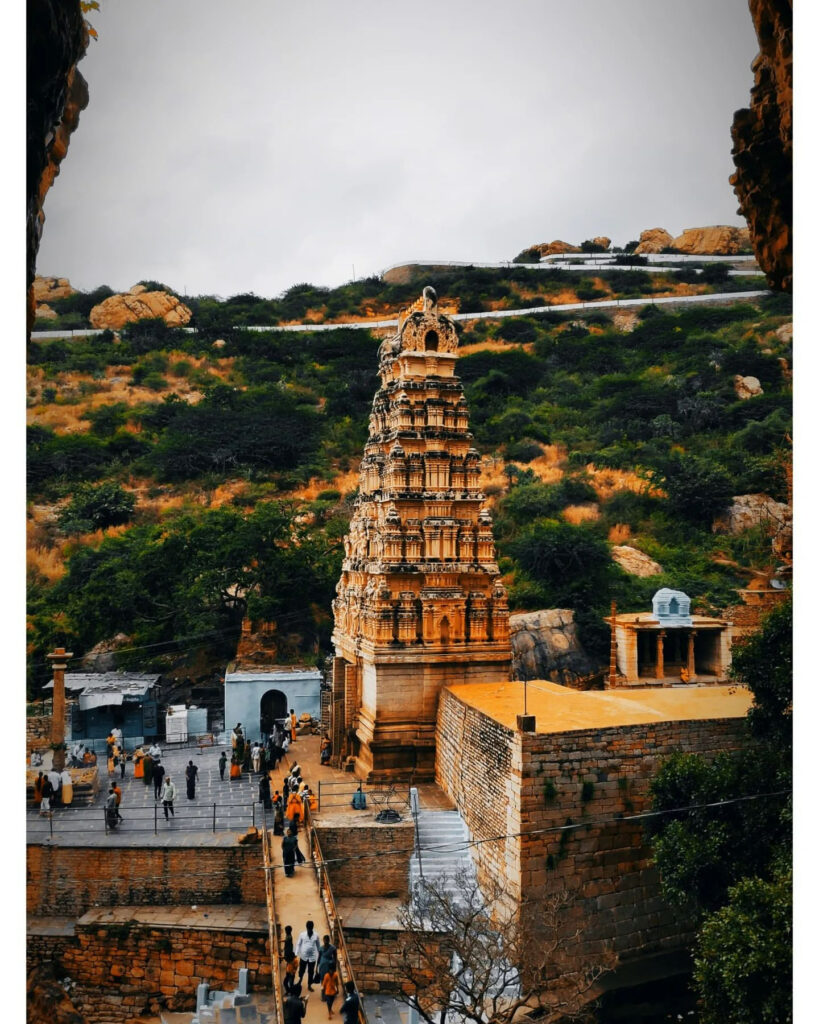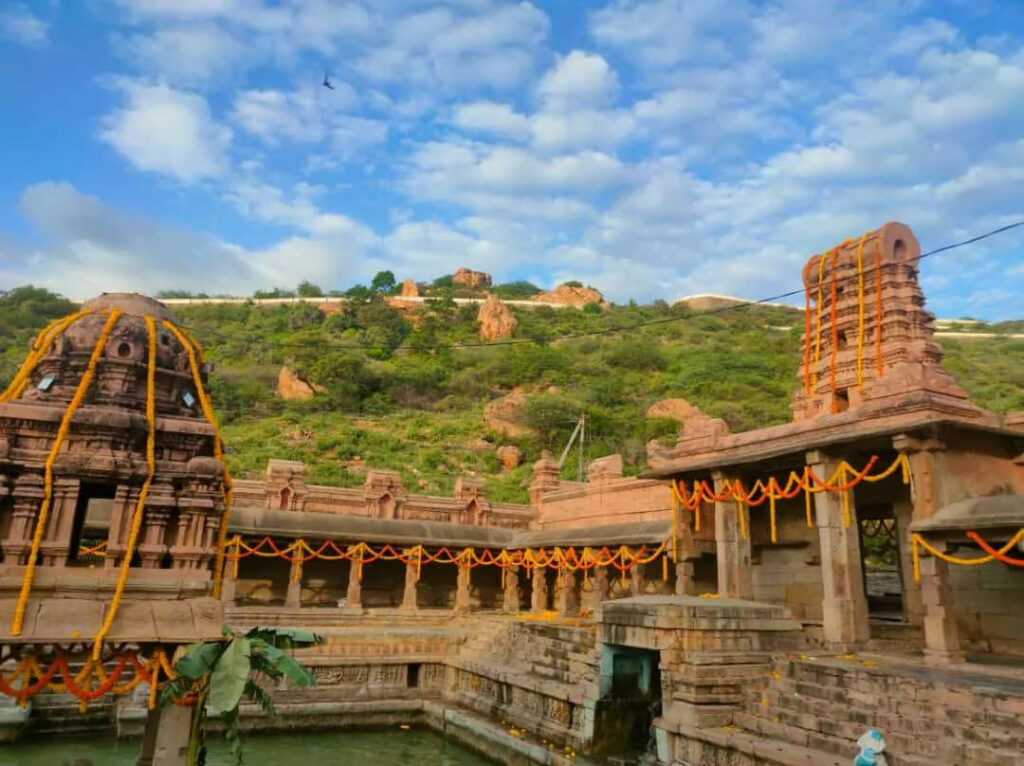Introduction
The Yaganti Temple is located in Andhra Pradesh’s Kurnool district. The Shiva-dedicated temple is also known as the Sri Yaganti Uma Maheshwari Temple. The temple was constructed in accordance with Vaishnavite custom. The united idol of Shiva and Goddess Parvati, known as Ardhanareeshwara, is kept in the shrine.
Mystery Yaganti Temple
According to legend, Sage Agastya intended to erect a temple here in honour of Venkateshwara. However, because the idol’s toenail was broken, it could not be mounted. Sage Agastya was extremely unhappy and offered up sacrifices. Shiva showed up and informed the sage that the location would be better suitable for a Shaivite temple because the area was similar to Kailasa. Sage Agastya then asked Shiva to grant a single-piece stone idol of Goddess Parvati called Sri Uma Maheshwara. Shiva gave him the idol as a result of his agreement.
Another belief states that the God appeared as a tiger before a devotee of Shiva by the name of Chitteppa when he was performing worship. The devotee yelled that he had seen Shiva and danced with great excitement after quickly realising that the tiger was none other than Shiva himself. Near the temple is a cave known as Chitteppa.

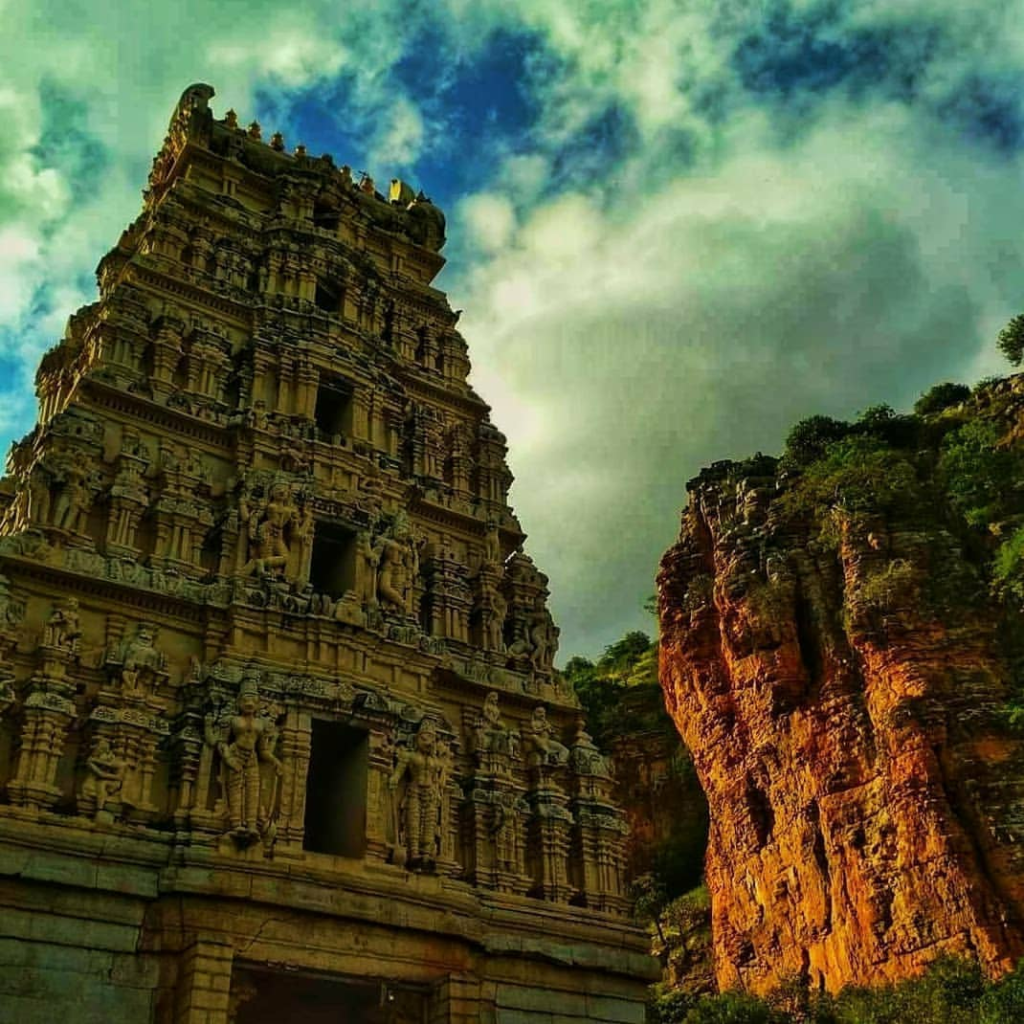

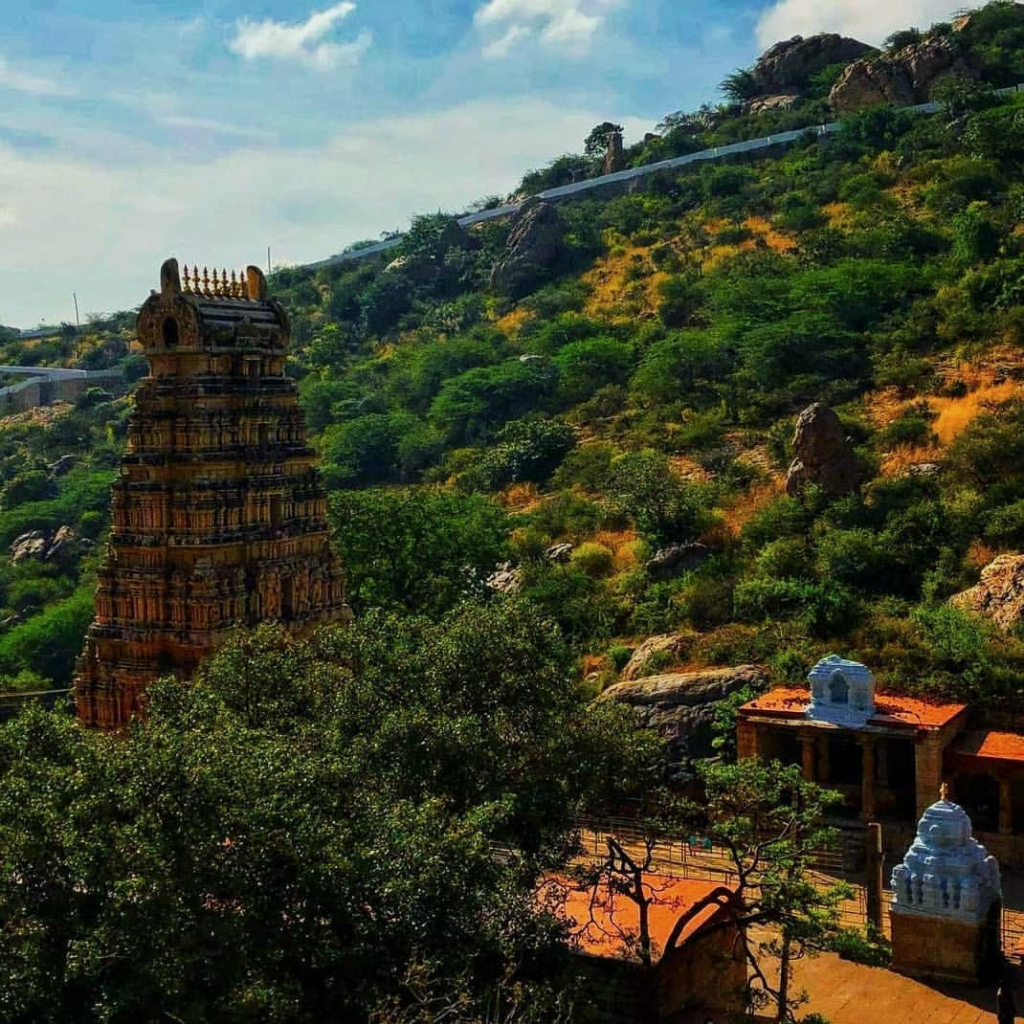

History of Yaganti Temple
One of Andhra Pradesh’s most well-known Shiva temples is the Yaganti Temple. The Pallava kings, Chola kings, Chalukya dynasty, and Vijayanagara monarchs are thought to have contributed to the construction of the temple, which is thought to date back to the fifth and sixth centuries. The monarch of Vijayanagara, Harihara Bukka Rayalu of the Sangam dynasty, made significant contributions to the temple by ensuring the completion of a number of structures inside and outside the temple.
It is thought that the revered Sri Veera Brahmendra Swami spent some time here while writing the Kalagnanam.
Architecture of Yaganti Temple
Shiva, Parvati, and Nandi are the three principal deities at the temple. The Yerramala hills, which are incredibly beautiful and contain numerous natural caves, are home to the temple, which is surrounded by lush foliage.
The Nandi (bull) in front of the temple is said to be continually expanding in size, according to devotees. The Nandi, according to the locals, was previously much less in size. They claim that an experiment was done on the idol and that because of the makeup of the rock used to build the idol, it has a propensity to grow naturally on its own. As is customary, devotees do Pradakshinas all around the shrine. It is thought that one pillar was removed by temple staff because the Nandi grew larger. The Basavanna (stone Nandi) of the temple, according to the saint Sri Veera Brahmendra Swami, would come alive and shout at the end of the Kali Yuga.
The temple’s grounds contain caves both inside and outside. There are 120 steps leading up to the Agastya Cave, which devotees can visit. This is thought to be the cave where Sage Agastya offered sacrifices to Shiva. A Devi idol is kept in the cave and is revered.
The Sri Venkateswara idol in the Venkateswara Cave is broken. This cave is accessible by steep steps. This idol is thought to have existed before to the Tirumala Tirupati Temple. It was impossible to worship the idol because its foot was broken. The Tirupati Temple may not be necessary, according to the saint Sri Veera Brahmendra Swami, if you visit this cave.
Saint Sri Veera Brahmendra Swami authored some of his Kala Gnanam at the Veera Brahmam Cave.
On the grounds of the temple lies a small Pushkarni (pond). It is thought that the water enters this pond through the mouth of Nandi at the base of the hill. The abilities of the ancient Vishwakarma Sthapathis underline the fact that no one is aware of how the pond receives water year-round.
Significance of Yaganti Temple
On the grounds of the temple, water is constantly flowing into the Pushkarni. For the devotees, taking a holy bath in the temple pond is of great benefit. Before making his prayers to Shiva, Sage Agastya is said to have taken a dip in the Pushkarni.
It is said that the crows’ cawing distracted Sage Agastya when he was doing penance. He swore at the crows for being barred from the area. The vahana of Shani Deva is the crow. The curse prevents Shani Deva from entering the shrine.
Yaganti Temple Celebrates Festivals
During the Maha Shivratri festival, a lot of worshippers come to the temple.
Temple Timings of Yaganti Temple
Morning: 06.00 am – 01.00 pm.
Evening: 03.00 pm – 08.00 pm.





